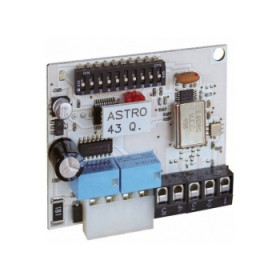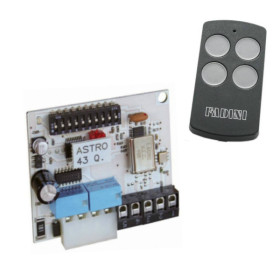Fadini Astro 43 433MHz 2 button gate automation transmitter and stand-alone receiver
Fadini Astro 75 315MHz transmitters and receivers are no longer supplied.
The 315MHz frequency is no longer used for gate automation.
If you need to replace an Astro 75 transmitter or receiver, both need to be replaced together.
The Fadini replacement option is with the Astro 43 transmitter and receiver which both use 433MHz.
Transmitter
- Frequency 433.92 MHz
- Radio transmitter access codes set by dip-switches
- The smaller, pocket sized version makes it possible to have the device at all times
Receiver
- Self-learning, for external application to operate with a 433.92 MHz radio signal
- Stand-alone receiver for Elpro control panels
- Site code is set using switches on the receiver
| Transmitters |
| Number of Buttons |
4 |
| Button Colour |
Various |
| Case Colour |
Various |
| Number Of Channels |
4 |
| Frequency |
433.92Mhz |
| Coding Type |
Rolling Code |
| Technical |
| Power Supply |
12V Alkaline battery |












